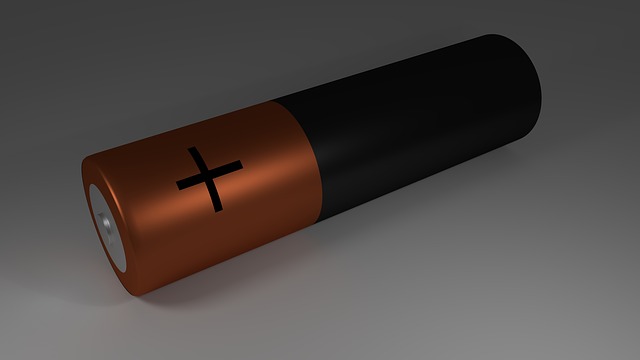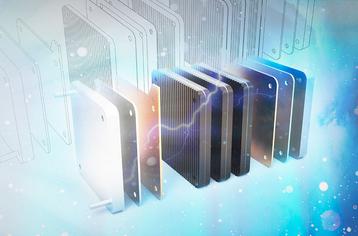Lithium Ion Battery Charging First Time-When and How
APR 01, 2020 Pageview:1120
A lithium-ion battery is also used for power mobile phones, tablets, digital cameras, etc. They have a long lifetime, but ultimately lose their charging ability. By charging it properly and caring for it you can extend the life of your lithium-ion battery. Charge them to 50% and check them every 2 to 3 months to ensure that they maintain their charging if you're going to store lithium batteries for long period.
In this article, we have discussed about the charging of lithium ion batteries in detailed which will help you to charge them in better way.
When should a lithium ion battery be charged?
HOT?AND COLD WEATHER USAGE
Lithium-ion batteries are like humans since not two behave exactly the same and are best used in non-too hot or cold temperatures.
These batteries perform better at high temperatures than at low temperatures, because heating decreases the resistance inside the battery and increases the chemical reaction. The side effect of this cycle is to stress the battery, which in hot environments will shorten life expectancy for long periods.
On the other hand, cold temperatures increase the internal resistance and make the battery work harder and reduce its power. Batteries with a capacity of 100% at 27 ° C normally decrease 50% at -18 ° C.
What you should do: The temperature around the battery greatly affects battery safety. Operate and store in cool, dry temperatures to optimize your battery efficiency and/or longevity. Warming your pocket or backpack with a cold battery can give you more time to run over the winter.
FOR LONG TERM STORAGE
Often the battery cannot be used for a lengthy time span. Below are strategies to hold the full long-term storage battery capacity.
What to do: Hold the charge level of 40 percent until release. In cool temperatures such as the refrigerator (0 ° C-4 ° C), do not position the battery in an air-tight jar. Let the battery warm up before recharge to ambient room temperature.
How do you charge your lithium ion battery for the first time?
You don't have to make a new lithium-ion battery despite common belief. This means that the first cycle of the battery is not completely discharged and loaded. The full power of the new lithium-ion batteries is available from the outset and the charge does not differ from 10.
Only charge it and you're ready to use it.
Standard Usage of New Lithium ion batteries
You need between 300-500 charging and discharge cycles, which are usually 2-3 years, for your lithium-ion battery. Lithium-ion batteries will inevitably suffer slowly over their lifespan because of a variety of factors, including load cycling, transport, fluctuating temperatures, frequency of usage and general ageing.
Use only the indicated intelligent charger given to avoid the risk of damaging your battery. Our intelligent chargers have integrated circuits that are specially designed to supply our lithium-ion cells with the required voltage, which prevents overburdening.
Follow these steps to keep the battery pack safe.
Charge your battery if needed only.
What to do: Don't worry about discharging full, for the safety and durability of your battery are better partial and sporadic charge. Use only the approved smart charger for your own protection and battery health. Keep dry cool (25 ° C and below). Room temperature charge 25 ° C. Space fee. Do not load less than 0 ° C or more than 40 ° C.
Protection
You can risk damaging your battery to the point that it is unusable if these tips and instructions are not followed. Unless the battery is not used correctly, you may also risk your own protection and that of others. If paired with an incorrect charger, it can be overheat or overcharged and a risk of combustion and fire is inevitable.
What you should do: check for any signs of battery physical harm. If battery is toothed, broken or drained, do not use it. Observe fatigue and overheating symptoms. If swelling, smoke or high temperatures are observed, do not use or charge. If the signs above are found, stop using flammable materials and dispose of them safe.
Is it ok to leave a lithium ion battery on the charger?
Let's start with some basics on the charge of lithium, which varies from conventional requirements. Lithium ion batteries which include all widely recognized acronyms require very complex multi-stage processes to completely charge the battery. You may have learned about bulk / float / pulse and all kinds of jokes how this technology in the past century can be charged absolutely and properly. Because of the existence of lithium breakdown in cells, these batteries chemistries need very complicated algorithms to achieve a proper charge.
Lithium ion batteries need a safer and full charging profile with much simpler, constant voltage or CC / CV charging current. Simply stated, the tension is set and a current is used until this tension is reached when the current ceases flowing, by example. This is the same system used by your cell phone or laptop power adaptor and is almost the same power as a reversed DC from your car / boat / bike alternator.
With this information in mind, if the right voltage cap on the lithium ion battery is set for charging, no problem is left on the charger with the lithium ion battery. But if the voltage increases and you have kept the battery on charge then it might harm your device and decreases the life span of your battery that is why it’s better to keep it on optimum level of charging that is neither over charge it nor discharge it. This is the only way to increase the life span of your battery and use it without any hassle.
We are hoping that the popular trend of lithium ion batteries would be brought to light. While it seems to be difficult, the Lithium ion batteries used and other lithium chemicals are, in fact, a much simple concept for proper charge and battery maintenance.
- Prev Article: Custom Li-ion Battery - Making and Buying
- Next Article: Lithium Battery Charging Bag-Definition and Safety
Leave Message
Hottest Categories
-
Hottest Industry News
-
Latest Industry News












